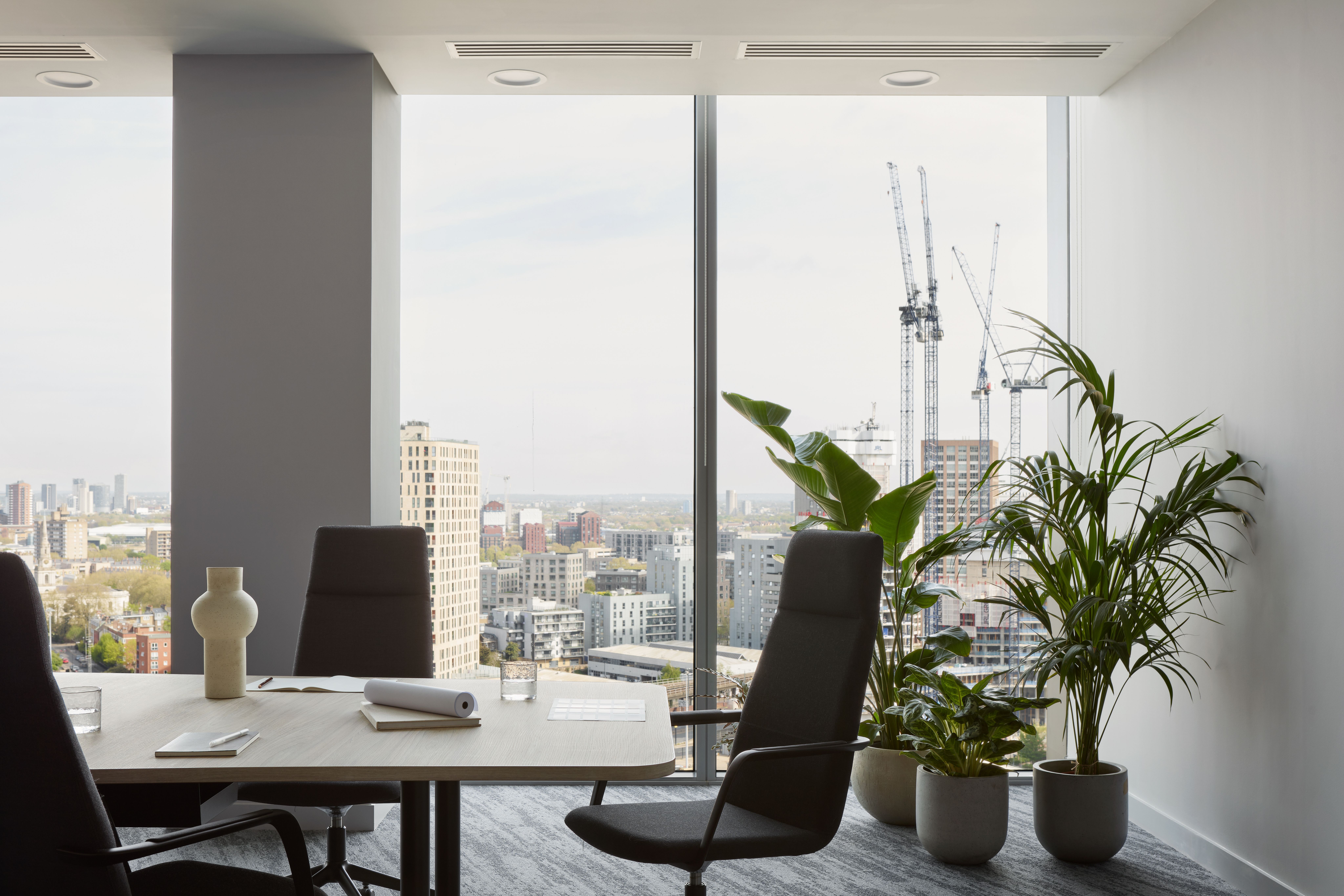
The Changing Role of the Office
23 Oct 2024
Office
The idea of what a workspace looks like and how it needs to perform has evolved over time in response to changes in the way we work.

Looking back at the history of office design, it’s possible to identify cultural and technological trends that have informed how workspaces are designed. The recent shift to hybrid working and the increasing presence of AI in the workplace are prompting yet another revolution in office design, which Ikon is responding to with innovative, user-centred solutions.
Over the past three years or so, we have worked with several clients to help them achieve a hybrid working model based on the needs of post-pandemic workers. Employees coming into the office need spaces where they can work on focused tasks away from the distractions at home. Places for in-person meetings or catch ups with colleagues also remain valuable as an alternative to the digital interactions we’ve all become used to. Any firm that has not yet adapted its office floor plate to suit this hybrid model will inevitably encounter inefficiencies that can affect productivity and employee satisfaction.
One of the issues that arose following the pandemic was the lack of opportunity for new starters to engage directly with their peers. We find that people learn a great deal just by sitting near to senior colleagues. Modern offices can facilitate this by replacing traditional workstations with dedicated and flexible ‘neighbourhood’ spaces so teams can gather and learn from one another. There is also still demand for large town hall-style spaces that can be used for company-wide events or the more informal social interactions that allow colleagues to connect. Our design for Alpha’s offices in The Point in Paddington includes meeting rooms, open-plan desking, auditorium seating and a drinks point so employees have a variety of places to get together.

Today’s flexible offices must allow for different kinds of working, as well as meeting the needs of different kinds of people.
Today’s flexible offices must allow for different kinds of working, as well as meeting the needs of different kinds of people. Open-plan spaces are good for helping workers feel connected to their colleagues, but they can be noisy, distracting and uncomfortable for some employees with neurodivergent needs. The solution is to incorporate dedicated zones for focused working as we did at our office for DCD Saffron Hill, which contains bespoke phone booths and meeting rooms separated from the main office by double-glazed Crittall partitions. This allows people to escape from the bustle of the office for a few hours of concentrated work or to conduct calls in a suitable setting.
As we look to the future, it seems clear that the shift to working from home is here to stay and it is therefore important to consider the needs of a generation of workers who view this approach as the new normal. Creating spaces that people want to come to and that provide many of the same comforts as home can also help to attract and retain talent, which makes sense as a long term investment as it reduces costs associated with human resources. We find that small interventions can make a big difference, like quality furnishings, artwork, plants and good coffee. These things become talking points and bring a sense of joy so employees feel happy coming to work. The offices we designed for asset managers Signal Capital feature comfortable and contemporary lounge areas, as well as welcoming workspaces filled with classic furniture designs.
We’ve recently also begun to witness the affects of artificial intelligence in workplace environments, as these technologies become increasingly sophisticated and widespread. AI is already being paired with motion sensors to monitor and analyse workspace utilisation so planners can create optimised layouts based on the behaviours of staff. In general, the speed with which technologies evolve today affects how leadership teams operate, because in six months or a year there could be new software that changes how their employees perform certain tasks. This means flexibility and the ability to iteratively adapt the workplace environment is key, both now and going forward.


